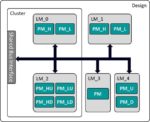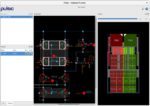Test experts use the acronym BIST for Built In Self Test, it’s the test logic added to an IP block that speeds up the task of testing by creating stimulus and then looking at the output results. Memory IP is a popular category for SoC designers, as modern chips include multiple memory blocks for fast, local data and register storage… Read More
Electronic Design Automation
Design IP Sales Grew 19.4% in 2021, confirm 2016-2021 CAGR of 9.8%
Design IP Sales reached $5.45B in 2021, or 19.4% YoY after 16% in 2020, on-sync with semiconductor growth of 26.2% in 2021 according to WSTS. IPnest has released the “Design IP Report” in May 2022, ranking IP vendors by category (CPU, DSP, GPU & ISP, Wired Interface, SRAM Memory Compiler, Flash Memory Compiler, Library and I/O,… Read More
Tensilica Edge Advances at Linley
The Linley spring conference this year had a significant focus on AI at the edge, with all that implies. Low power/energy is a key consideration, though increasing performance demands for some applications are making this more challenging. David Bell (Product Marketing at Tensilica, Cadence) presented the Tensilica NNE110… Read More
Bigger, Faster and Better AI: Synopsys NPUs
AI-based applications are fast advancing with evolving neural network (NN) models, pushing aggressive performance envelopes. Just a few years ago, performance requirements of NN driven applications were at 1 TOPS and less. Current and future applications in the areas of augmented reality (AR), surveillance, high-end smartphones,… Read More
Future.HPC is Coming!
According to the experts, the semiconductor industry is poised for a decade of growth and is projected to become a trillion dollar industry by 2030. In 2021 the semiconductor industry finally hit $600B so $1T by 2030 seems like a big ask, but not really if you look at the indicators inside the semiconductor ecosystem. Foundries, … Read More
Freemium Business Model Applied to Analog IC Layout Automation
Freemium is the two words “free” and “premium” combined together, and many of us have enjoyed using freemium apps on our phones, tablets and desktop devices over the years. The concept is quite simple, you find an app that is useful, and download the free version, mostly to see if it operates as advertised,… Read More
The Path Towards Automation of Analog Design
You may have noticed that I have been writing a lot more about analog design lately. This is no accident. Analog and custom blocks are increasingly important because of the critical role they play in enabling many classes of systems, such as automotive, networking, wireless, mobile, cloud, etc. Many of the SoCs needed for these… Read More
ML-Based Coverage Refinement. Innovation in Verification
We’re always looking for ways to leverage machine-learning (ML) in coverage refinement. Here is an intriguing approach proposed by Google Research. Paul Cunningham (GM, Verification at Cadence), Raúl Camposano (Silicon Catalyst, entrepreneur, former Synopsys CTO and now Silvaco CTO) and I continue our series on research… Read More
Visual Debug for Formal Verification
Success with Open-Source Formal Verification
The dream of 100% confidence is compelling for silicon engineers. We all want that big red button to push that magically finds all of our bugs for us. Verification, after all, accounts for roughly two-thirds of logic design effort. Without that button, we have to create reference models,… Read More
White Paper: Advanced SoC Debug with Multi-FPGA Prototyping
S2C EDA recently released a whitepaper written by a good friend of mine Steve Walters. Steve and I have worked together many times throughout our careers and I consider him to be one of my trusted few, especially in regards to prototyping and emulation. Steve is also my co author on the book “Prototypical II The Practice of FPGA-Based… Read More











Quantum Computing Technologies and Challenges